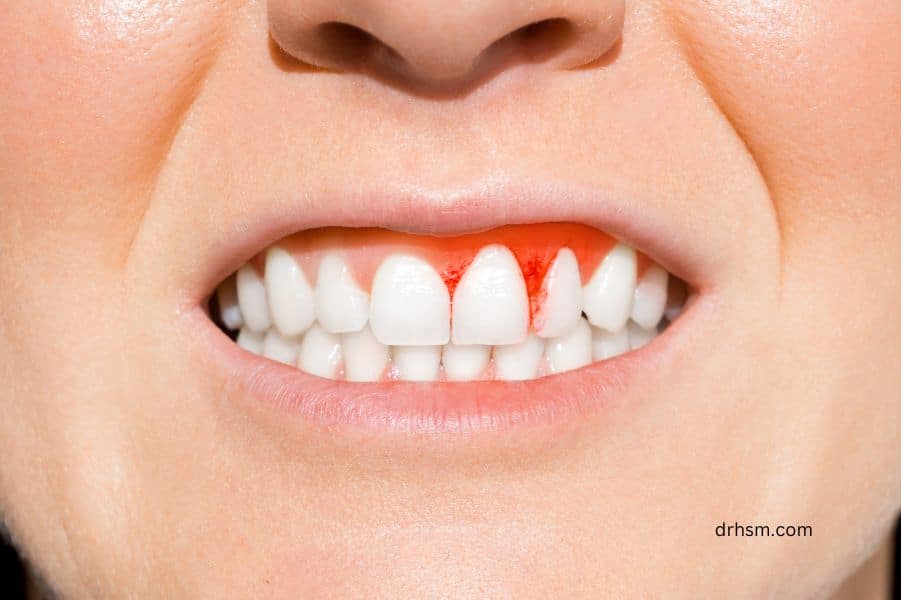Introduction
Hey there, I'm glad you found my blog! If you've been searching for answers to the question "how long does a periodontal cleaning take?" then you've come to the right place.
As a dental professional, I know how important it is to keep your teeth and gums healthy, and I'm committed to providing you with accurate and useful information.
In this comprehensive guide, I'll cover everything you need to know about periodontal cleanings, including what they are, why they're important, how long they take, and how to prepare for one.

I'll also share some tips for maintaining optimal oral health and preventing gum disease from returning. So, let's dive right in!
What is a Periodontal Cleaning?
First things first, let's talk about what periodontal cleanings actually are.
These procedures, also known as deep cleanings, scaling and root planing, or SRP, are designed to treat gum disease (periodontitis) by removing plaque and tartar buildup both above and below the gumline.
During a periodontal cleaning, your dental hygienist or dentist will use specialized instruments to carefully clean the pockets around your teeth, as well as smooth out the root surfaces.
This helps to promote healing and prevent the progression of gum disease.
Why is a Periodontal Cleaning Important?
Gum disease is a common yet serious oral health issue. If left untreated, it can lead to tooth loss and even contribute to other health problems like heart disease and diabetes.
That's why it's crucial to address gum disease early and get the necessary treatment to keep your smile healthy.
A periodontal cleaning is an essential part of this process. By thoroughly cleaning your teeth and gums, your dental professional can help you prevent the progression of gum disease and even reverse its early stages (gingivitis).
Moreover, regular dental cleanings can help prevent the buildup of bacteria, plaque, and tartar, reducing your risk of developing periodontal disease in the first place.
Stages of Gum Disease
To better understand the importance of periodontal cleanings, let's take a closer look at the stages of gum disease:

How Long Does a Periodontal Cleaning Take?

So coming back to main question – how long does a periodontal cleaning take? The answer can vary depending on several factors, including the severity of your gum disease, the number of teeth affected, and the specific techniques used by your dental professional.
However, in general, you can expect a periodontal cleaning to take anywhere from 45 minutes to 2 hours.
In some cases, your dentist may choose to split the cleaning into multiple appointments, especially if your gum disease is more advanced or if you have dental anxiety. This can make the process more manageable and comfortable for you.
What to Expect During a Periodontal Cleaning
Understanding what to expect during a periodontal cleaning can help alleviate any anxiety or concerns you may have. Here's a step-by-step overview of the procedure:
Tips for a Comfortable Periodontal Cleaning Experience
While a periodontal cleaning might sound intimidating, it doesn't have to be an unpleasant experience. Here are some tips to help you have a more comfortable appointment:
Preventing Gum Disease: Tips for Optimal Oral Health
Now that you know what to expect during a periodontal cleaning, let's talk about some strategies for maintaining optimal oral health and preventing gum disease from returning:
Brush your teeth twice a day: Use a fluoride toothpaste and a soft-bristled toothbrush to gently clean your teeth for at least two minutes each time. Make sure to brush all surfaces of your teeth, including the fronts, backs, and chewing surfaces, as well as your tongue.
Floss daily: Flossing helps remove plaque and food debris from between your teeth and under your gumline, where your toothbrush can't reach. Be gentle when flossing to avoid causing irritation or damage to your gums.
Use an antimicrobial mouthwash: Rinsing with an antimicrobial mouthwash can help kill bacteria and reduce plaque buildup. Look for a mouthwash that's specifically designed to fight gum disease and follow the instructions on the label for best results.
Eat a balanced diet: A diet rich in fruits, vegetables, whole grains, lean proteins, and low-fat dairy products can help support your overall health and promote good oral hygiene. Limit sugary and acidic foods and beverages, as they can contribute to tooth decay and gum disease.
Stay hydrated: Drinking plenty of water throughout the day helps to wash away food particles and bacteria, as well as promote saliva production, which is essential for neutralizing acids and keeping your mouth clean.
Quit smoking: Smoking is a significant risk factor for gum disease, as it weakens your immune system and makes it more difficult for your body to fight off infections. If you're a smoker, consider quitting to improve both your oral and overall health.
Visit your dentist regularly: Schedule regular dental check-ups and cleanings to ensure your teeth and gums stay healthy. Your dentist can also detect and address any potential issues early, preventing more serious problems down the line.
Conclusion
Periodontal cleanings play a crucial role in managing and preventing gum disease, helping you maintain a healthy smile for years to come.
While the length of the procedure can vary, most cleanings take between 45 minutes and 2 hours.
By following the tips provided in this post, you can make your periodontal cleaning experience as comfortable and stress-free as possible.
Remember, the key to a healthy smile is regular dental check-ups and cleanings, as well as good at-home oral care. Stay committed to maintaining your oral health, and you'll be on your way to a brighter, healthier smile.
Thank you for taking the time to read this comprehensive guide, and I hope it has answered your question about how long a periodontal cleaning takes. If you found this information helpful, please consider sharing it
